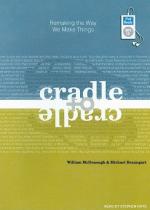
|
| Name: _________________________ | Period: ___________________ |
This test consists of 15 multiple choice questions and 5 short answer questions.
Multiple Choice Questions
1. Which is an example of a material that is downcycled?
(a) Gold jewelry.
(b) Dead organic matter.
(c) Aluminum cans.
(d) The book itself.
2. When can PVC, a commonly used plastic in children's playground equipment, be toxic?
(a) When exposed to carbon dioxide.
(b) When consumed.
(c) When frequently touched or rubbed on the skin.
(d) When heated to high temperatures.
3. What does Bill find inspiring about the environment that he grows up in?
(a) He learns from many famous mathematicians.
(b) He eats many recyclable foods.
(c) The environment is dirty and polluted.
(d) Everywhere there are many beautiful and well-designed items.
4. The Industrial Revolution functions on the idea of brute force. What is meant by this phrase as used by the authors?
(a) Develop the product so that it is consumed by environmental forces.
(b) Weaken the product so that it is safer for consumers.
(c) Add more strength to the product so that it works under any circumstance despite the consequences.
(d) Force the product to work under specific circumstances only.
5. What is a potential problem associated with pesticide and herbicide use?
(a) Their toxins build up in the environment.
(b) Their gases can be very explosive.
(c) Their production is very cheap.
(d) Their chemicals can be recycled.
6. What is the main goal of industry?
(a) Increase profit and reduce production costs.
(b) Reduce consumer spending and make more eco-efficient products.
(c) Create materials that use exclusively natural resources.
(d) Design efficient products that are expensive.
7. Which statement is the best explanation for why sports shoes are produced outside the U.S.?
(a) There are no regulations on quality production.
(b) Countries outside the U.S. have better technology to produce sportswear.
(c) There is less regulation on toxic fumes in the countries where they are produced.
(d) Countries outside the U.S. have a higher demand for sports shoes.
8. Which word describes how industry views efficiency?
(a) Equity.
(b) Losses.
(c) Cumbersome.
(d) Profits.
9. What statement best describes how the authors feel about consumerism?
(a) It is the fault of an education system that does not teach good consumerism.
(b) It is not completely the consumer's fault for the mass production of environmentally dangerous products.
(c) We can blame our children for our own consumerism.
(d) We can blame uneducated consumers for the state of the environment.
10. What is an alternative solution to using International Style for home design?
(a) Design using new materials and resources.
(b) Design using old materials that can be recycled.
(c) Design using newer technology for design.
(d) Design using local resources and products.
11. What happens when garbage is incinerated?
(a) It is compacted into smaller areas.
(b) It releases many toxic chemicals into the air.
(c) It becomes a more useful material.
(d) It is easier to recycle.
12. How must ink be removed from paper in order to recycle the paper?
(a) The paper must be bleached.
(b) Very expensive chemicals must be used to remove inks.
(c) Inks can be removed with hot water and soap.
(d) Paper cannot be recycled.
13. Which statement is NOT an example of recycling as we know it?
(a) Converting old books to new printer paper.
(b) Melting old soda bottles to make new carpet.
(c) Making new backpacks out of old milk cartons.
(d) Collecting rain water for household use.
14. Why are car parts difficult to recycle?
(a) It is very difficult to melt down steel.
(b) The body parts have many toxic chemicals that are dangerous in the recycling process.
(c) It is almost impossible to disassemble the body parts.
(d) It is difficult to separate paint from car body parts, so it is impossible to recover the steel.
15. What toxic chemical is included in the production of plastic water bottles?
(a) Neon.
(b) Carbon.
(c) Sodium.
(d) Antimony.
Short Answer Questions
1. What is a monoculture?
2. What does Michael chose for a professional career?
3. What is the authors' point in opening the introduction by discussing common household products?
4. Why are books problematic to recycle?
5. What is the result of more and more efficient agriculture?
|
This section contains 754 words (approx. 3 pages at 300 words per page) |

|




